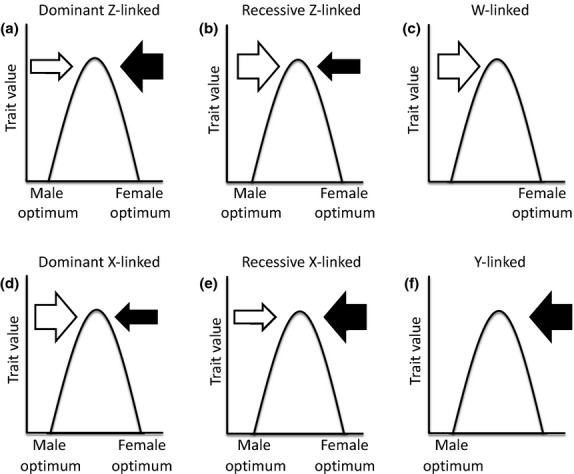Figure 2.

Relative strength of sex-specific selection acting on different sex chromosomes. Relative sex-specific selection is shown by arrow size, white arrows represent female-specific selection, black arrows represent selection towards male-specific optima. For dominant Z-linked alleles (panel a), male-specific selection is relatively stronger due to the fact that the Z is present more often in males than females. Recessive Z-linked alleles (panel b) are more often exposed in females to selection due to female hemizygosity; therefore, female-specific selection is relatively stronger. W-linked genes (panel c) are only selected for female-specific effects. Dominant X-linked alleles (panel d) are more often selected for female-specific effect because the X is more often present in females, whereas recessive X-linked alleles (panel e) are more often exposed in males due to male hemizygosity. Y-linked genes (panel f) are only selected for male-specific effects.
